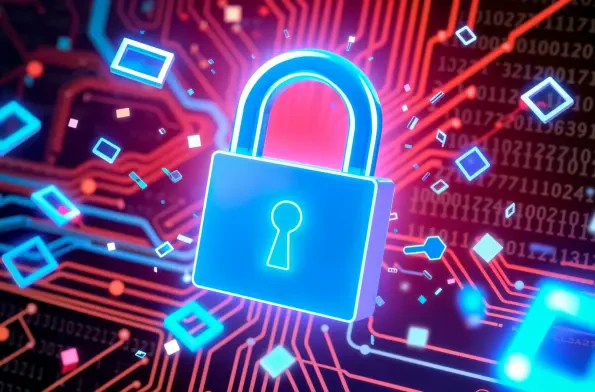Patch management has emerged as an indispensable aspect of cybersecurity in modern organizational settings. With the cyber threat landscape evolving rapidly, Chief Information Security Officers (CISOs) play a pivotal role in reshaping strategies to address software vulnerabilities and ensure robust system security. As malicious cyberattacks become more sophisticated, an advanced and proactive approach to patch management is essential for safeguarding organizational infrastructure. This transformation necessitates embracing newer technologies and fostering strategic partnerships to tackle the challenges posed by these threats. Organizations are compelled to shift from traditional methods to more refined techniques that anticipate risks rather than react to them. In this adaptive journey, CISOs must champion initiatives that prioritize both technology integration and collaboration for achieving exemplary patch management.
Evolving Cyber Threat Landscape
The dynamic nature of today’s cyber threat landscape highlights the urgency in prioritizing patch management, emphasizing its crucial role in thwarting potential hacks. Traditional approaches to patch management struggle to keep pace with increasingly sophisticated attacks. CISOs must revolutionize their strategies to effectively manage risks, especially considering that approximately 80% of cyberattacks exploit vulnerabilities in unpatched software. This statistic reveals the dire necessity for a strategic pivot toward a more preventive handling of software vulnerabilities. Organizations can no longer afford to overlook the importance of immediate and strategic action on patch applications. As threats continue to evolve, the capability to preemptively address vulnerabilities with a structured and informed approach will be pivotal in maintaining cyber resilience and security integrity.
Automation and Intelligence Integration
Integrating automation and intelligence into patch management is a significant trend reshaping the cybersecurity landscape. With the aid of AI and machine learning, CISOs can rapidly identify and prioritize vulnerabilities by analyzing historical data and engaging predictive analytics. This technological shift empowers organizations to streamline patch deployment processes, effectively reducing the risk of security breaches while enhancing operational efficiency. Automation facilitates the intricate task of scheduling deployments, allowing organizations to expedite critical patches without jeopardizing system stability. By harnessing AI, organizations can forecast potential vulnerabilities and optimize patch rollout schedules, ensuring that security measures are implemented promptly and optimally. The integration of intelligent systems underscores a paradigm shift in patch management, transforming the approach from reactive to proactive, thereby minimizing exposure to cyber threats.
Collaborative Efforts for Effective Management
Collaboration between software vendors and organizations is becoming increasingly vital to effective patch management. Improved communication and cooperation foster an environment where timely sharing of vulnerability information, release timelines, and interim mitigation strategies become more feasible. Cultivating this synergy is essential for organizations to be adequately prepared, ensuring timely patch applications that significantly mitigate potential risks. The relationship between vendors and organizations must transcend traditional boundaries, leading to collaborative frameworks where information is exchanged freely and openly. By establishing robust partnerships, organizations gain the advantage of being informed promptly, allowing better coordination in applying patches. This level of collaboration not only optimizes patch management but also contributes to a more united front against cyber threats. With enhanced cooperative efforts, the industry moves towards an era where strategic alliances become a boost to cybersecurity defenses.
Leadership and Strategy in Patch Management
Effective leadership and strategic planning are cornerstones in advancing patch management practices within organizations. CISOs are encouraged to establish specific patch management policies encompassing frameworks for prioritization, testing protocols, and deployment timelines. Implementing strategies such as a “ring deployment” model allows for rolling out patches incrementally, ensuring minimal disruption while safeguarding system integrity. Clearly defined roles and responsibilities for stakeholders lead to cohesive and consistent patch application across the organization. A structured approach to patch management not only enhances organizational defense but also streamlines processes, enabling timely responses to emerging threats. Comprehensive strategies that account for all aspects of patch deployment foster a culture of preparedness and resilience. CISOs must lead the charge in creating meticulous policies that ensure patches are applied effectively, maintaining operational continuity and security robustness.
Risk-Based Prioritization Approaches
Transitioning from traditional vulnerability scoring systems to risk-based assessments is paramount in optimizing patch management strategies. This shift involves evaluating contextual factors such as active exploitation status and business impact, enabling CISOs to allocate resources more effectively towards addressing the most consequential vulnerabilities first. By concentrating efforts on high-risk vulnerabilities, organizations can ensure a robust security posture while maximizing resource efficiency. Risk-based evaluations transcend mere data points, offering a comprehensive understanding of potential threats and their ramifications on business operations. Organizations benefit from a nuanced approach to vulnerability prioritization, aligning security initiatives with overall business objectives. As a result, resource allocation can be fine-tuned to address immediate threats comprehensively, fostering an environment where cybersecurity measures are both efficient and impactful. This strategic perspective embraces a more holistic view of security that aligns well with organizational needs and challenges.
Fostering a Compliance Culture
Cultivating a compliance-centered culture within organizations is essential for successful patch management. CISOs have a critical role in driving education and training initiatives that emphasize the importance of patch compliance, encouraging employee involvement in safeguarding organizational security. Transparent communication about system updates and their implications ensures smoother adoption, reducing resistance to necessary changes. A culture of compliance not only embraces patch management as a technical requirement but also integrates it into the organizational ethos, ensuring every stakeholder’s active participation. Continuous training and awareness programs foster a culture of accountability, where employees understand both their roles and the broader impact of patch management efforts. As organizations strive for seamless integration of patch management policies, fostering a compliance-driven mindset becomes indispensable. This culture supports resilience and agility in security operations, transcending mere procedural adherence to embody a shared commitment to cybersecurity success.
CISOs’ Strategic Role in Business Risk Management
Collaboration between software vendors and organizations is increasingly key to successful patch management. Building strong communication enhances the timely exchange of vulnerability information, release schedules, and temporary mitigation tactics. Such cooperation is crucial for organizations to effectively manage risks by ensuring timely patch deployments. For real progress, vendor-organization relationships must shift beyond traditional models, paving the way for collaborative systems that emphasize open and free exchange of information. Establishing solid partnerships allows organizations to receive prompt updates, fostering improved coordination in patch implementation. This level of synergy not only enhances patch management but also strengthens the fight against cyber threats. As cooperation improves, the tech industry edges closer to an era where strategic alliances bolster cybersecurity defenses robustly. Through increased collaborative efforts, the sector can usher in advancements that provide a united front against the ever-evolving challenges in cybersecurity.













